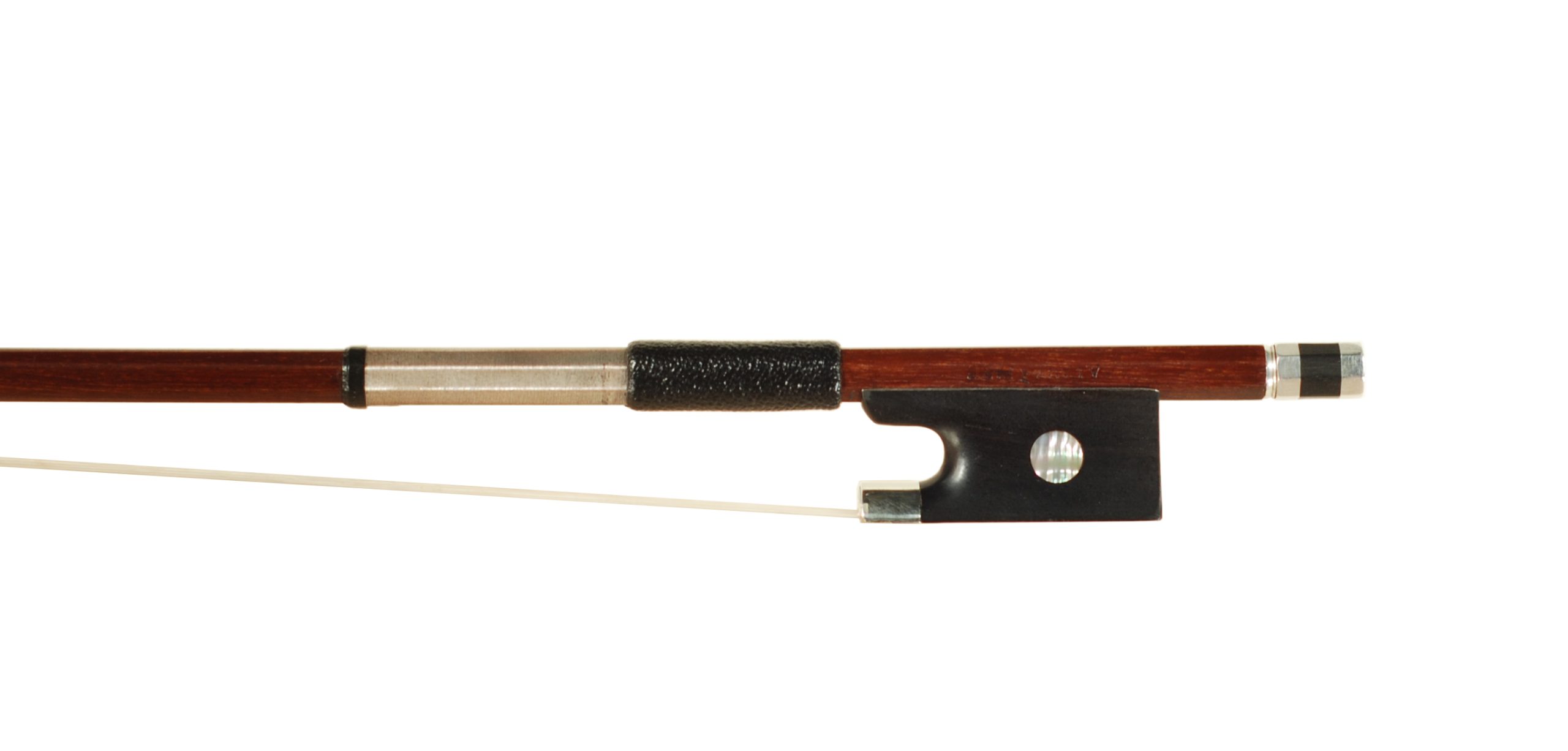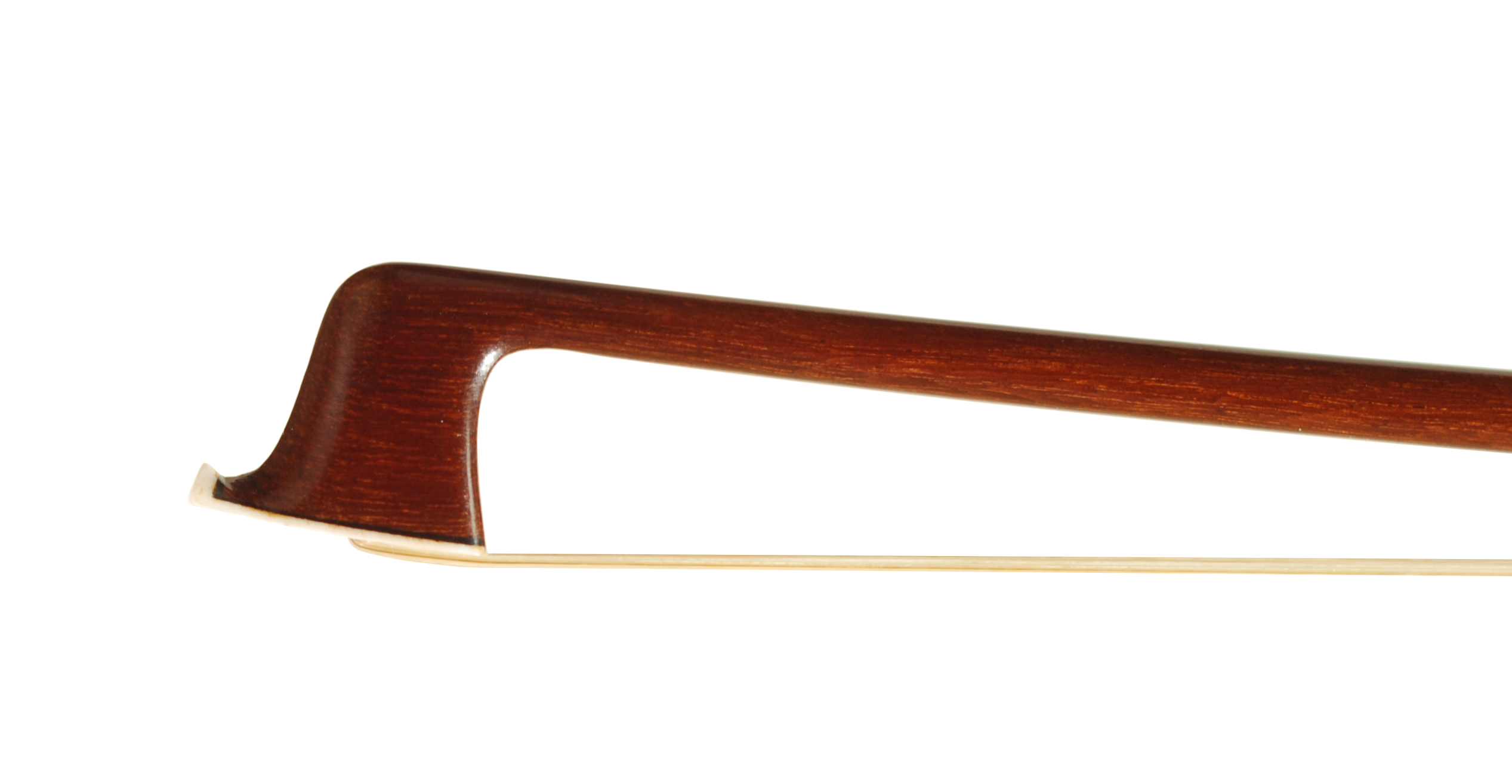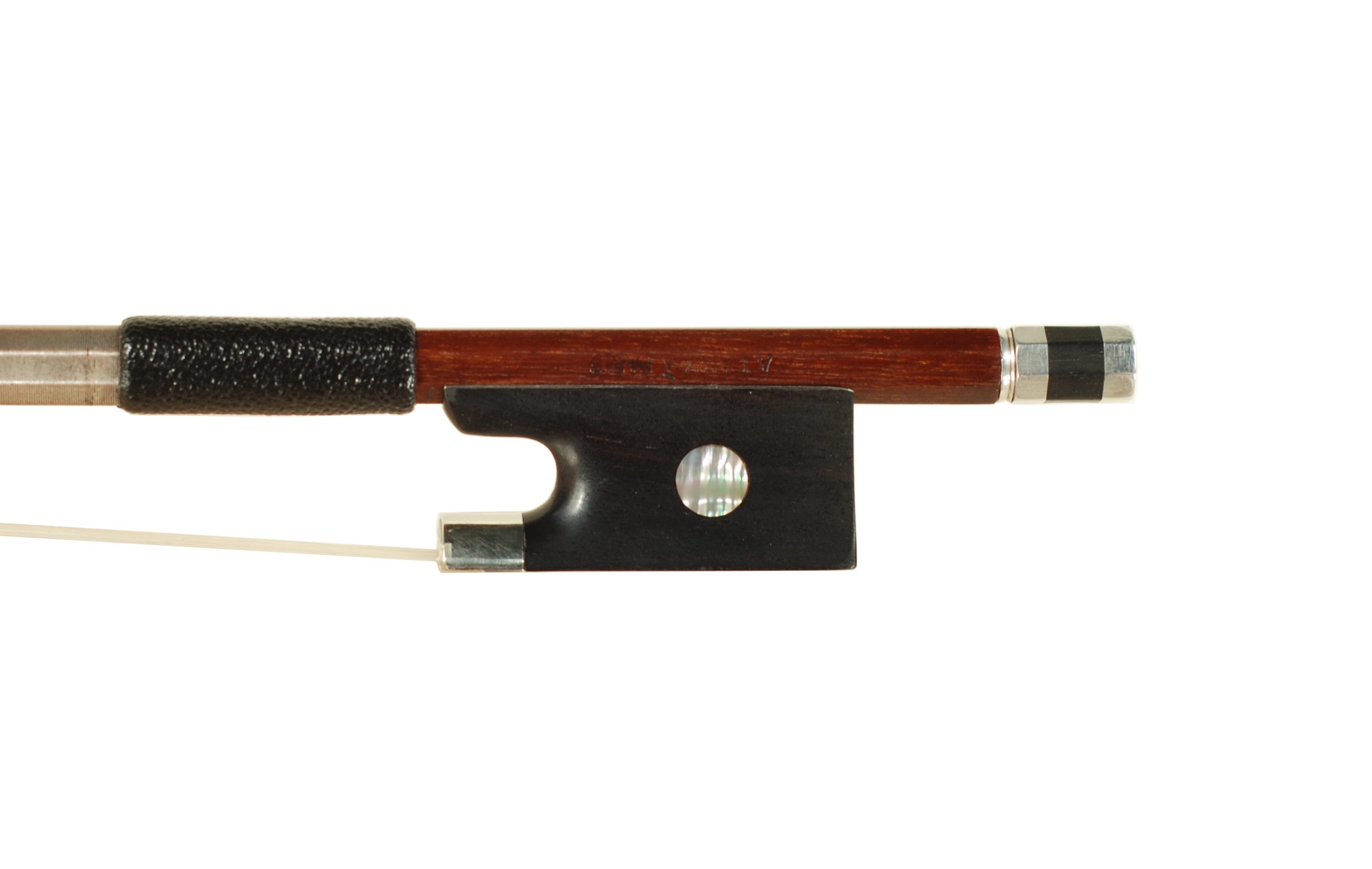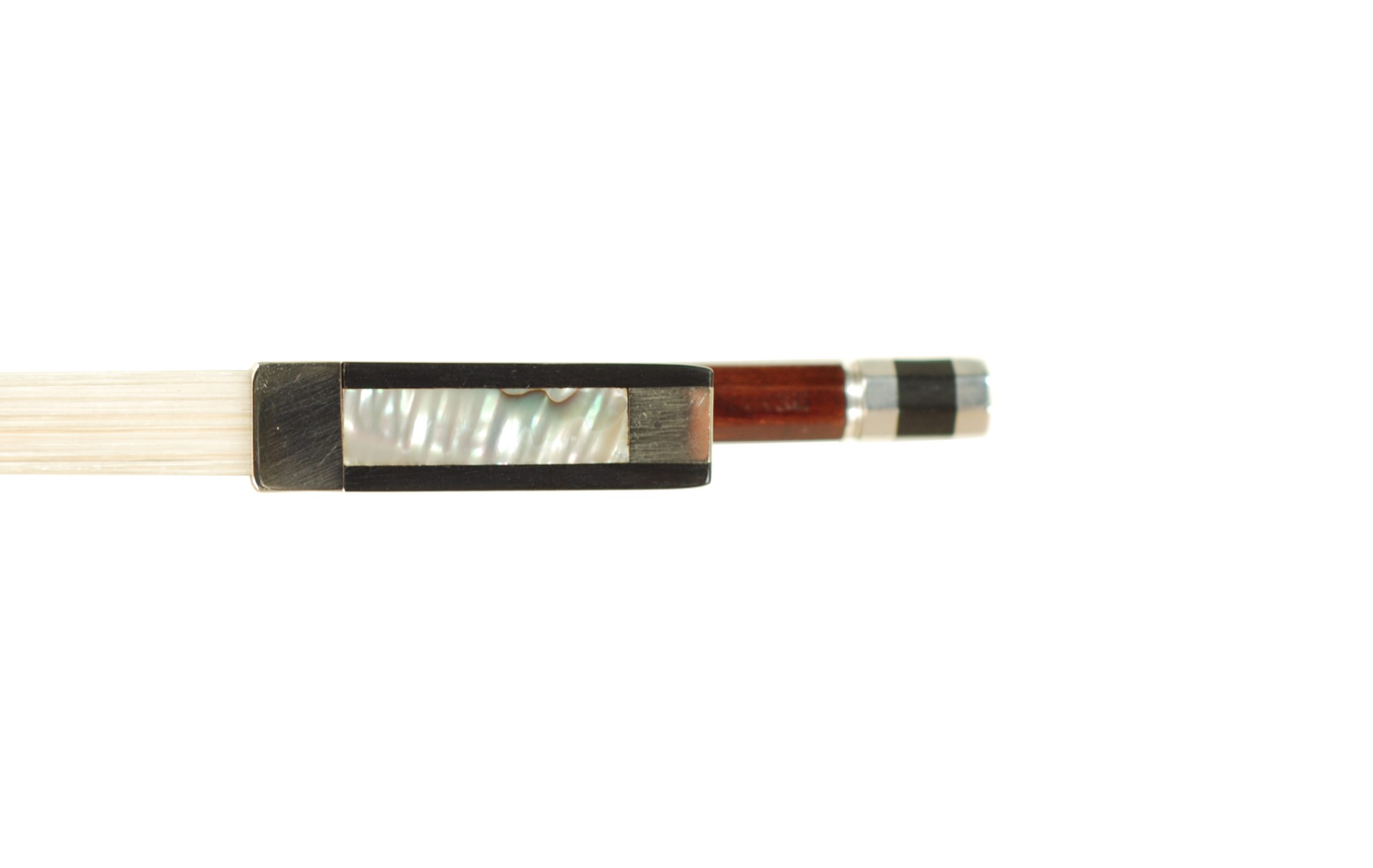A Lamy Workshop Violin Bow- Mirecourt circa 1900-1920 – SOLD AUGUST 1, 2025 –
$995.00

Stamped:
FRANCE – on the butt of the bow
French bow making goes back to the Renaissance period when craftsmen began making bows for early string instruments like viols and viola da gambas. These early bows were made shorter and often more curved compared to modern bows and were patterned after English and Flemish bows. In the 1800’s Xavier Tourte came along in Paris and transformed French bow making. He is credited for the development of the modern bow: the convex curve and the wood he settled on, pernambuco. The wood and his new design were renowned for their balance, agility, ability to hold a shape once heated and then cooled, and tonal qualities. Paris became one of the leading centers for bow making during the 18th and 19th centuries, attracting talented apprentices and makers from across France and especially Mirecourt which is located in the Vosges mountains east of Paris. Mirecourt became the hub of French bow making where young makers could live affordably and make bows at a considerably less cost. Numerous workshops sprung up in Mirecourt producing bows with exceptional quality. Many shops fostered collaboration and competition among bow makers, pushing makers to make continual refinement. These aggressive young makers and apprentices helped establish French making techniques and their design rise to the top.
The pernambuco wood controversy that now exists in Brazil has been the impetus for me to get my bows that I’ve had stored since the late 1970’s just hanging at my home workshop and here at the shop completed. Twenty years ago, my collection of unrestored pernambuco bows numbered about 800. The prized wood, pernambuco, is the cornerstone of the bow, what makes it all work and Mirecourt imported tons, not just a few logs. In the 1500’s Portuguese explorers stumbled upon the shores of Brazil, encountering trees along the coastline that held immense commercial potential for tanning fabrics of royal colors in reds to purples and later to find it as a source for bows. This discovery of the specie sparked a flourishing trade between Brazil and Europe. This era coincided with the rise of violin shops in Mirecourt and other areas, but established Mirecourt as a city of trade, new ideas, and culture. After 1732 Mirecourt took over as the prominent commercial center in France for bows. It was fueled by the access to the pernambuco from Brazil and the quality of the bows, the result of the excellent craftsmanship insisted on by the newly formed bow makers guild. The art of making a bow is a skill that needs expertise in four areas: woodworking (pernambuco and ebony), jewelry work (sterling/gold/shell or nickel), leather work (goat, lizard to kangaroo), and hair dressing (male hair at least 29” long for violin bows and no tangles or crossed hair). Everything is held together with precisely cut wedges and exact knot work. During the 1800’s bow making went from an anonymous craft to a revered discipline, with bowmakers now putting their stamps (name) on their bows and selling them all over the world.
Our stick was made in a Mirecourt workshop, where they used a very famous French name, Lamy, stamped on the bow to assist in selling the item. Smart marketing on a bow that was made in the beginning of the 20th century. The stick is made from pernambuco wood, round in section, nickel silver fittings. The tip and frog are original. The ebony frog has pin work on the heel and in the lining. I replaced both mother-of-pearl eyes and the pearl slide in the frog. The leather thumb grip and lapping at the other end of the winding was also replaced with goat leather. The wood is dark chocolate color and semi-firm. The end button is three piece and the button has a double turn in the collar. It is a striking beautiful bow, great wood, and streamlined– no extra girth. The bow is easily 100 years plus in age. I wish it could talk and show me pictures, even in black and white, of the workshop and wood piles this bow came from. We offer a player a stick with older pernambuco wood, sort of a sleeper in a way where I don’t know who exactly made the bow. It doesn’t matter; it was made well. As you can tell, I like the bow. It is also historically interesting to me for sure. Made in Mirecourt during its heyday. A French bow under $1000!
Weight fully haired 60.1 grams






